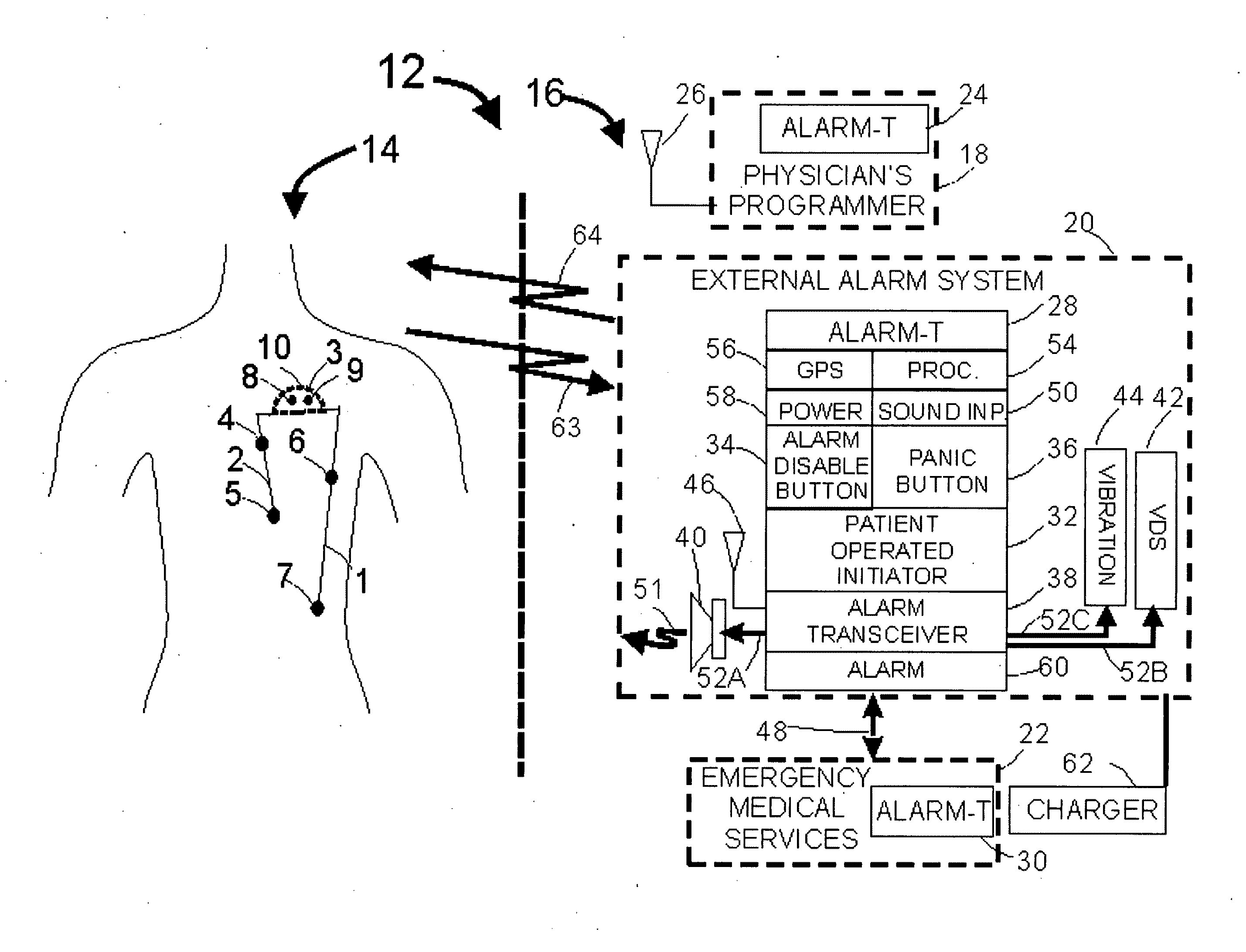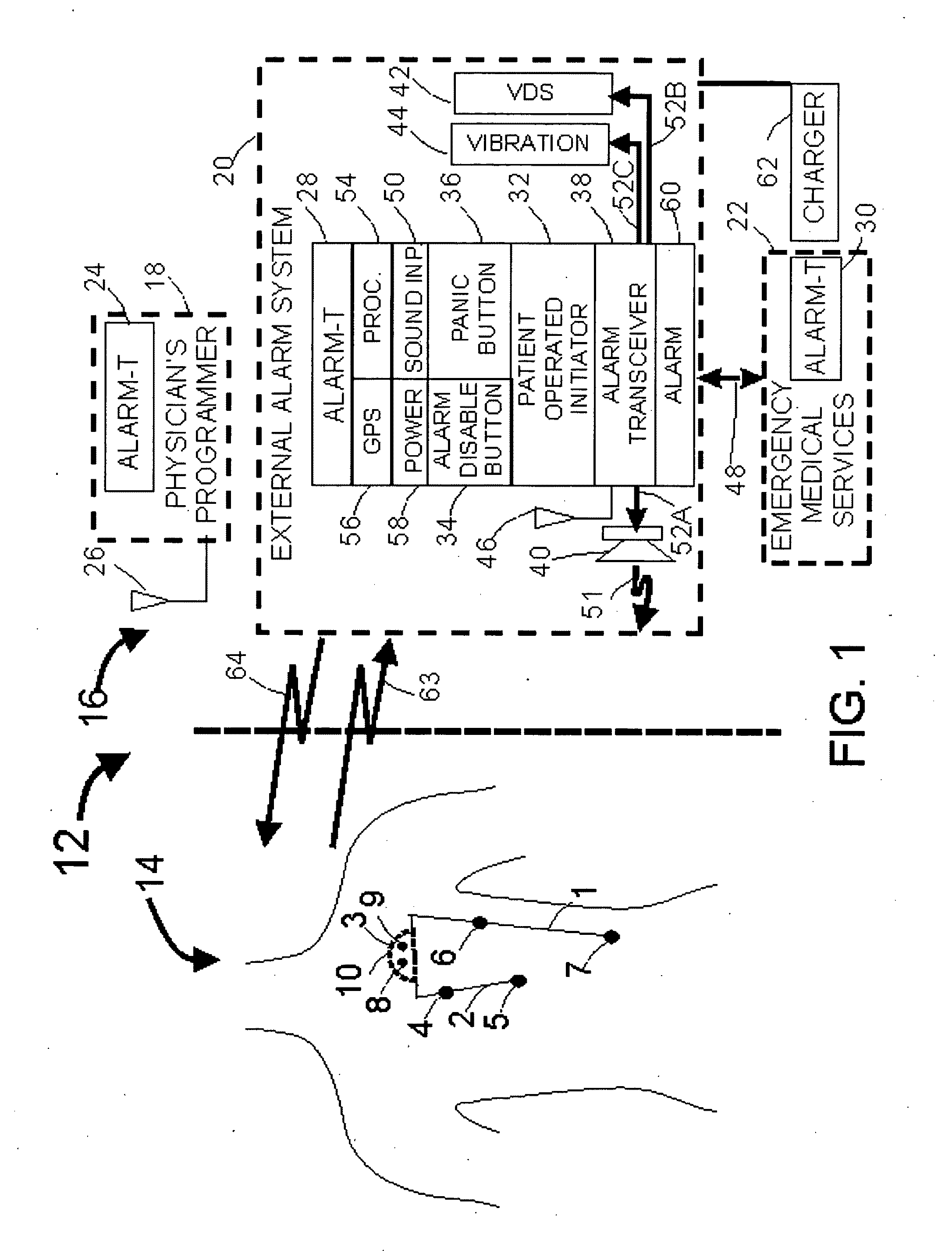Systems and methods of alarm validation and backup in implanted medical devices
a medical device and alarm technology, applied in the field of implantable medical devices, can solve the problems of inability to communicate with external devices, inability to use external devices, and inability to work correctly with external devices
- Summary
- Abstract
- Description
- Claims
- Application Information
AI Technical Summary
Benefits of technology
Problems solved by technology
Method used
Image
Examples
Embodiment Construction
[0030]FIG. 1 illustrates an example of a medical system 20 including internal components 14 and external components 16. The IMD 3 includes sensors to monitor a condition associated with a patient. For example, electrode contacts can act as sensors to measure cardiac activity, neural activity, or other electrical activity of the body. A microphone sensor can measure sonic data related to the patient (e.g. cardiac or respiratory sounds), an accelerometer can measure movement, acceleration or position, and a biosensor can measure metabolite levels within the patient. In one embodiment, an insulated electrical wire lead 2 can include sensors, and can connect with the IMD 3 using an IS1 connection to communicate with battery-powered sensing electronics contained within an IMD housing 10. The lead 2 can be configured with sensing electrode contacts 4 and 5 which can be placed subcutaneously or within the heart. Each lead may incorporate one electrode contact or as many as sixteen contacts...
PUM
 Login to View More
Login to View More Abstract
Description
Claims
Application Information
 Login to View More
Login to View More - R&D
- Intellectual Property
- Life Sciences
- Materials
- Tech Scout
- Unparalleled Data Quality
- Higher Quality Content
- 60% Fewer Hallucinations
Browse by: Latest US Patents, China's latest patents, Technical Efficacy Thesaurus, Application Domain, Technology Topic, Popular Technical Reports.
© 2025 PatSnap. All rights reserved.Legal|Privacy policy|Modern Slavery Act Transparency Statement|Sitemap|About US| Contact US: help@patsnap.com



